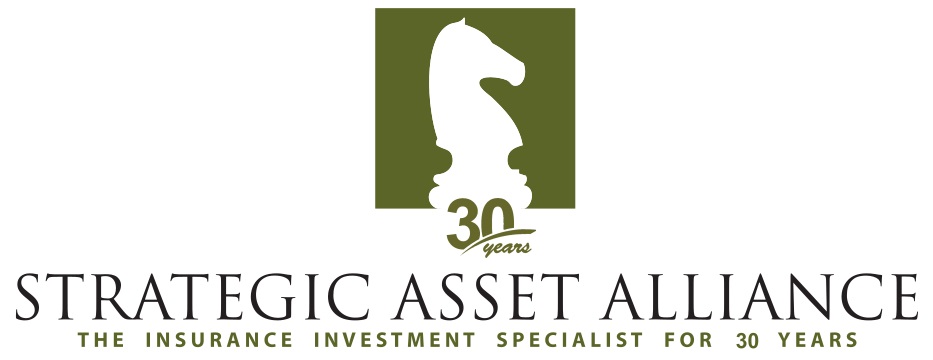Spread Products as a Tool to Achieve Diversification and Mitigate Inflation
We spoke with Manulife Investment Management to discuss how insurers might be able to utilize spread products as a way to navigate their bond portfolios through the current investment environment.
Maisie Short
| Managing Director |
Manulife Investment Management
maisie_short@manulifeam.com | www.manulifeim.com
SAA: Global bonds have experienced record drawdowns across credit qualities in 2022, what sectors do you believe offer the most attractive risk/reward tradeoff going forward?
Manulife: Slowing global economic growth, coupled with geopolitical conflict, tightening monetary policy and the fastest inflation we have experienced in decades have resulted in a sharp re-pricing across the fixed income landscape in 2022. Valuations across sectors appear far more attractive than they have been in recent history (for instance, all major fixed income sectors traded at a discount to par as of June 30, 2022), however the global economy is at a crossroads with several potential scenarios playing out in the coming years, such as a ‘soft landing,’ stagflation or recession. This dynamic creates challenges for asset allocators as positioning a fixed income portfolio for success may not be as clear cut as in times past.
We believe the answer is neither to take on additional risk, nor is it to avoid risk altogether by fleeing to cash. Rather, we feel taking a flexible approach to fixed income while promoting diversification is the best prescription for today’s challenges. Given our expectation for volatility across asset classes to remain high, success requires the ability to pivot quickly to embrace targeted risks as market dislocations arise or to reduce risk as liquidity conditions tighten. Selectively seeking out outperforming segments across sectors, industries, and regions while avoiding the underperforming areas will have the potential to be a meaningful difference-maker as investors try to navigate the about-face in monetary policy and economic fundamentals. To that end, after careful evaluation of risk return potential, we believe several areas of the global fixed-income markets may be worth a closer look.
- Select Corporate Credit:
Despite macroeconomic headwinds, we believe it is important to maintain an allocation to corporate credit in the current environment which can offer incremental yield to help reduce the negative impacts from rising interest rates and high inflation. While extremely low default rates and a favorable technical backdrop have been supportive for corporate issuers, we believe security selection will be paramount moving forward as the backdrop for credit is expected to be more challenged in the coming years. Nevertheless, we believe there are still pockets of opportunities within corporate sectors and believe the sweet spot is in targeted BBB-rated investment grade corporates (where yields are near their highest levels since the financial crisis) and BB-rated high yield corporates, which continue to benefit from rising star momentum in the market (~$85B of high yield debt across 19 issuers have been upgrade to investment grade in 2022 as of July month end). - Securitized Assets:
After underperforming on a relative basis throughout the majority of the COVID-19 pandemic, new opportunities appear to be reemerging in securitized assets. After the conclusion of the Federal Reserve’s program to purchase mortgage-backed securities, spreads have widened significantly in 2022 and in some cases now exceed those of comparable-quality corporate bonds. The result has sent yields on agency MBS, and other securitized assets, to decades-long highs. Beyond agency MBS, we believe the broader asset class—through various niche sub-sectors, such as whole business securitizations, credit risk transfer securities, non-qualified mortgage securities and single asset/single borrower CMBS—also offers the added benefit of enhanced diversification potential against corporate credit risk should corporate default rates pick up in 2023. - Emerging Markets Debt :
Emerging markets have faced a number of shocks in 2022, not least of which was the Russian invasion of Ukraine; China property sector concerns and other idiosyncratic events and policies have all weighed on the EM segment as well. However, we believe that many higher quality sovereign and corporate issuers have become oversold as they dislocated in concert. While tighter liquidity conditions in developed economies do present a risk for emerging markets, earlier inflation pressure in these economies means many emerging-market central banks have pre-emptively—and aggressively—hiked policy rates already. Policy rates in Brazil, for example, are within 50 basis points of a 15-year high, currently at 13.75%. This proactive policy making by central banks in emerging economies has sent the average cash rate across regions above 5.25% for the first time since 2016 and has restored needed carry and cushion to local markets. By being highly selective within the space, we believe experienced investors can take advantage of attractive discounts and incremental income within the broad emerging-market debt space.
SAA: Investor’s fixed income allocations have historically been less geographically diversified relative to their equity counterparts, in the current high inflationary environment do you see that dynamic shifting and where are you finding opportunities outside the US debt markets?
Manulife: Historically, market participants have been able to rely on high quality, domestically focused, fixed income strategies that consistently delivered competitive returns, low volatility and operated as an effective off-set to equity risk. In the current environment of rising interest rates and high inflation, domestic bonds alone could struggle to meet investors’ risk return objectives. For instance, the last time U.S. inflation was rising at a comparable rate was in 1978, at which point the trailing 12-month performance for the Bloomberg U.S. Government/Credit Index failed to outpace year-over-year CPI for the following four-plus years.
By expanding the opportunity set to include non-U.S. yield curves, we believe investors have the ability to tap into potentially more favorable interest rate environments, while adding diversification away from domestic inflation. We are seeing this play out in countries whose economies may not be able to tolerate moving rates in lock step with the Fed and/or may see inflation falling quicker relative to the U.S. economy. The Eurozone is an interesting example of an economy that will likely not be able to move rates in concert with the U.S. given the challenges in the region. Over the medium-term, we are also monitoring the impact on investor flows should the ECB move away from negative/zero rates for the first time since 2012.
Further, while markets have adjusted to price in a series of aggressive rate hikes globally, we believe there are alpha opportunities in identifying regions where interest rate expectations are overdone. For instance, a scenario where a particular central bank becomes less aggressive in the coming months would suggest incremental total return prospects through price appreciation. We are currently finding value in AAA-rated sovereign debt of countries such as New Zealand and Norway, which currently offer relative yield pick-up versus US treasuries at specific points on the yield curve, and also have the potential for currency appreciation over the medium-term.
Further on foreign currencies, this is an asset class that tends to produce low or uncorrelated return streams against a variety of asset classes. Through exposure to global bonds, investors have the potential to provide their portfolios with additional diversification and total return opportunities through currency exposure. Additionally, history would tell us that the U.S. dollar is potentially in the process of peaking at this point in the Federal Reserve’s hiking cycle. With that said, adopting a fully unhedged mandate exposes investors to the high volatility of local currency markets. The good news is that currency risk is not an all-or-nothing proposition. By actively managing currency risk, investors have the potential to add alpha by taking advantage of these swings, while also gaining the diversification benefits of an unhedged global portfolio.
Source: Strategic Asset Alliance, Manulife Investment Management The information contained herein has been obtained from sources believed to be reliable, but the accuracy of information cannot be guaranteed.

